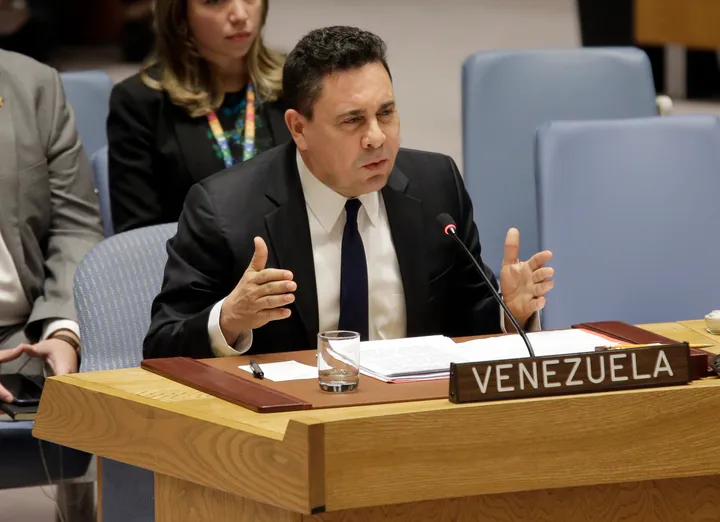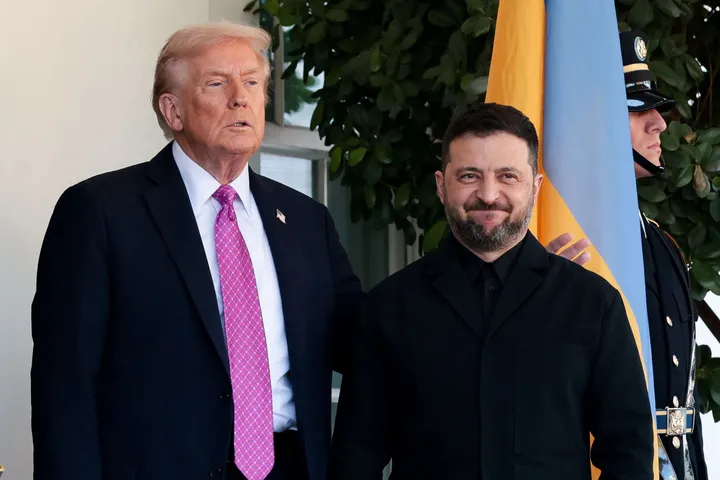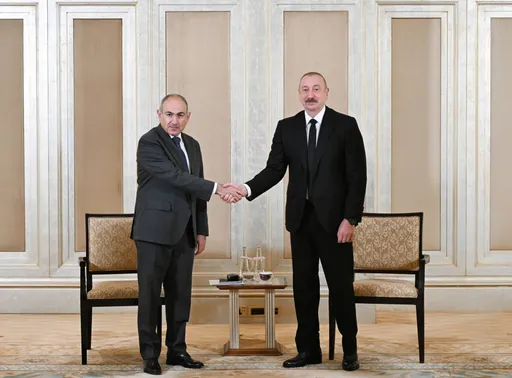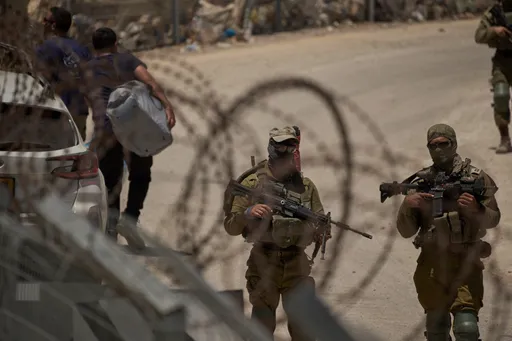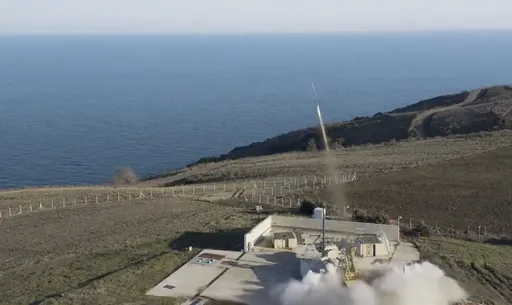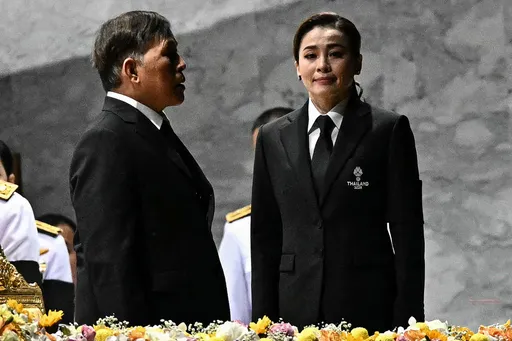HASSA/HATAY, Turkey — In a smoke-filled living room close to Turkey’s Syrian border, two prominent Syrian-Kurdish opposition figures are exchanging ideas and voicing their disappointment about the Syrian revolution and the current state of politics in the country's north.
Both Osman Huseyin and Mustafa Ali Mousto have long opposed the Assad regime. They are among the staunch critics of the regime and support the Kurdish political organisations that became targets of the Syrian regime and the YPG, the Syrian wing of PKK, which is considered a terrorist organisation by the US, the EU and Turkey.
Both men have paid heavily for their opposition. Huseyin survived an assassination attempt allegedly plotted by the YPG. And Mousto is now living in exile in Gaziantep, a province in Turkey's southeast, which hosts nearly 400,000 Syrian refugees.
In mid February, Mousta came to Huseyin's house in Hassa, a two-hour drive from Gaziantep. He wanted to discuss Turkey's ongoing military operation in Syria's Afrin district.
Huseyin is happy that he can live in a house in Hassa without paying any rent, thanks to his Turkish relatives. “Our roots are here. My mother is from Afrin and my father is from Hassa,” Huseyin told TRT World. “My grandfather is from here and grandmother is from there.” A mist descended from the Amanos mountains, draping the district's shoddily built houses.
“The border has divided families. Everybody has relatives on the other side of the border,” said Nadya Ali Mousto, Mustafa’s wife. Nadya’s mother is also from Suruc, a Turkish border district in Sanliurfa, a southeastern province. Her father is from Syria’s Kobani, which is located across Suruc.
In January 2015, Mousto says his house in Kobani was targeted by the US-led coalition in its bombing campaign against Daesh. Mousto says the YPG gave coordinates to the US forces that did not belong to Daesh-held areas but to his house in Kobani.
Did the YPG use the US air campaign to target him? Mousto nods his head in agreement.
Daesh and the YPG engaged in a five-month long battle in Kobani, a northern Syrian border district, from September 2014 to January 2015. Kobani became an experiment for the US-led coalition to measure the YPG’s military capability. The US decided to provide air support to the YPG.
In return, the YPG held its ground in Kobani, driving Daesh out of its borders. But beyond fighting Daesh, the YPG exploited the US-led air power and its advanced military equipment against those Kurds who opposed their policies.
The YPG did not stop there. They even fomented demographic shifts by driving Arabs out of several Syrian territories and populating them with people who hold their militant view.
Mousto was one of the YPG’s public enemies. A former head of Kobani's bar association, he stood against the YPG’s "iron fisted rule" in Kobani and other “cantons,” or autonomous regions, which the armed group has claimed to establish from Afrin to Jazira in northern Syria.
During the battle of Kobani, the YPG supplied coordinates to the US air force to destroy the key Daesh targets. But some of the targets weren't Daesh-held domains but homes and businesses of Kurds like Mousto.
“My house was targeted by one of the coalition sorties and was demolished completely,” Mousto told TRTWorld.
Prior to the air strikes, the YPG sent veiled threats to Mousto. Mousto's friends and relatives would often tell him that there are rumours in the city that his life was in danger. In 2014, some people affiliated with the YPG showed up at his brother-in-law’s office in Kobani.
“We will kill your brother-in-law because he does not shut his mouth up. He speaks up against us,” the men, according to Mousto's wife Nadya told Can Diray, her brother, who has a pharmacy shop and is widely known in Kobani as “doctor.”
Diray was concerned about the safety of his sister’s family. He advised them “to be careful,” remembers Nadya, Diray’s sister. “People talk about you. Do not open your door to strangers,” Diray said to Nadya.
The constant threats and intimidation forced Diray to tell his family to leave Kobani and move to Turkey. Nadya’s mother was born in Suruc, a Turkish border district across Kobani, so they also hold Turkish citizenship.
After a brief stay in Mersin, a southern Turkish province along the Mediterranean Sea, they settled in Gaziantep. During the Kobani battle, the family lost almost everything they had, including their house.
Nadya’s family was rich and his brother, Diray, owned several houses in Kobani. “During the battle, his eight houses were destroyed under a constant air bombardment by the US-led coalition. He [Diray] lost his office building. He owned a gas station which was also hit during the air strikes,” Nadya told TRT World.
Cantons “made out of cardboard”
Osman Huseyin was another victim of YPG rule in northern Syria. He is from Afrin, one of the YPG “cantons,” where Turkey and its ally forces, Free Syrian Army, have been conducting a cross-border operation, Operation Olive Branch, to end YPG domination. There are two other YPG “cantons”: Kobani and Jazira, east of the Euphrates River, that are in close proximity to Turkey’s border.
Whenever Huseyin hears the word “canton”, he makes a slight syllabic correction saying “karton” (cardboard in Turkish), implying that YPG rule in northern Syria is shaky and could collapse at any given point.
On March 18, Turkish-backed Syrian forces entered the city centre of Afrin without facing a strong resistance from the YPG. The YPG forces have reportedly fled the city to the regime-controlled parts of Syria.
Before Turkey’s Afrin operation, the YPG created unpleasant circumstances for Huseyin and his family until they fled Afrin. Huseyin headed the Kurdish Future Movement (SPKS) in Afrin, a political movement established by Mashaal Tammo, a prominent Kurdish opinion leader and politician, in 2005.
The movement was against both the Assad regime and the PKK's influence in northern Syria. Huseyin was influenced by it. But the party’s leader, Tammo, was killed in October 2011 allegedly by Assad's hitmen at the beginning of the Syrian civil war. The PKK was accused of helping the team to conduct the assassination.
“As Syrian-Kurds, we have shown our opposition to the Assad regime [at the beginning of the civil war]. The regime understood that it can not handle the Kurds by itself, so they brought the PKK from the Qandil mountains [located in northern Iraq] and supported them [to prevent the Kurdish population from joining the Syrian revolution]. Eventually, the PKK firmly settled in northern Syria,” Huseyin said.
In 2012, the YPG was established as the armed wing of the PYD which functions as the Syrian extension of the PKK. The armed group has rapidly claimed territories in northern Syria after Assad regime forces deliberately withdrew from those areas, leaving the YPG as the essential force.
The PKK leadership has had powerful links with the Assad regime since the late 1970s, when the group was allowed to operate training camps in the Syrian-occupied Bekaa Valley, now in Lebanon. PKK's founder Abdullah Ocalan worked with the Assad family side by side before he was expelled from Syria following Turkish military pressure in 1998. Ocalan has been imprisoned in Turkey since 1999.
Back then, the Syrian regime utilised Ocalan and his comrades for both external and internal purposes. Externally, the PKK armed groups, which largely recruited its members from the Syrian Kurdish population, have been mobilised against Turkey to threaten the country on the water issue and the status of the Hatay province, which seceded from Syria in 1938 and became part of Turkey in 1939.
“Hafez al Assad [the father of Bashar al Assad] has taken on the PKK file to use the group as a weapon against Turkey,” said Chamseddin Hamo, another prominent Syrian Kurdish opponent, who was the chairman of the central committee of the Kurdish Union Party in Syria (PYKS, also known as Yekiti).
Internally, PKK leadership suppressed Kurdish aspirations against the Syrian regime, with Ocalan advising Syrian Kurds to stay loyal to the Assad family.
“PKK did not belong to us. It has been imposed over Kurds by force,” Hamo told TRT World, while sitting at his house in Gaziantep, where he has been living since 2012.
His home in Aleppo’s mostly Kurdish-inhabited Ashrafiyah neighbourhood was completely demolished during the clashes between the YPG and the Syrian opposition forces. “If we were there, we would die,” he said.
Who made the YPG?
Huseyin is displaying a picture on his smartphone, showing Iran’s powerful General Qasem Soleimani with Cemil Bayik, the PKK’s current operating leader in Qandil. Iran has been a strong ally of the Assad regime since the 1980s, and during the civil war, it has heavily supported the regime through its proxy groups like Hezbollah.
Mousto also pointed out that the YPG was established after three crucial meetings in Suleymaniye, Damascus and the Qandil mountains.
The first one happened in late 2011, when the PKK’s two top leaders, Cemil Bayik and Murat Karayilan, met with Qasem Soleimani in Suleymaniye, a Kurdish populated northern Iraqi city located at the Iranian border, under Jangi Talabani’s supervision, Mousto said. The main topic of discussion was how to subjugate Syria’s Kurdish population under PKK.
Jangi Talabani was the brother of Jalal Talabani, founder of Iraq’s Patriotic Union of Kurdistan (PUK). Jalal Talabani became Iraq’s first Kurdish president following the US invasion in 2003.
The PUK and the PKK have had a tacit understanding for a long time. Talabani founded the PUK in Damascus in 1975 and met with Ocalan there several times. After Ocalan’s capture, the PKK leadership moved from Syria to the Qandil mountains in 1998 with the help of the PUK whose peshmergas used to control the mountains.
The second time, Salih Muslim, a Syrian Kurd and the former co-chairman of the PYD, and Omar Alush, a prominent northern Syrian Kurdish figure, who was recently assassinated in his house in Tel Abyad, met with Ali Mamluk, a top security official of the Assad regime in Damascus in 2012. Their talking points were mainly to discuss the PKK-Assad regime collaboration in Syria, Mousto said.
Enver Alush, Omar’s brother, hosted Ocalan in his house in Kobani back in the late 1970s. He has been commonly known as a mafia figure and is now living in Spain.
The third occasion is when the three top Assad regime officials met with Salih Muslim, Cemil Bayik and Murat Karayilan in May 2012 in the Qandil mountains to decide how to work together on the ground. The meeting was to establish the YPG and to put the group in charge of Syria, Mousto said.
Two months after the Qandil meeting, the PYD announced the official establishment of the YPG.
YPG “cantons” in northern Syria
“The regime withdrew and the PKK started to manage us. Because the regime was growing weaker, it started to give support and weapons to the YPG,” Mousto observed at the time, while he was still in his native Kobani. “They thought if they kept the Kurds out of the revolution they could take on the Sunni Arabs.”
“They started pressuring us immensely, especially in Kobani," Mousto said.
The deal between the Assad regime and the PKK worked very well for both sides. The YPG blocked Kurdish opposition to the regime and in return, the YPG was allowed to claim most of northern Syria.
The collaboration is apparent when it comes to understanding who is funding whom. Though the regime withdrew most of its armed forces from northern Syria, it still continues to pay salaries to public servants in the YPG-controlled territories, keeping state services under its control, according to many residents in the region.
The PYD, as the political arm of the PKK in Syr, established courts and Asayish – which is its policing force – to enforce its own version of law and order. Prominent Kurdish political figures have been heavily targeted by the YPG’s Asayish operations in order to silence dissent and the YPG’s human rights violations have been well-documented by respected human rights organisations.
The YPG, the militant wing of PYD, soon launched an assassination campaign against its opponents. Tammo and Nasreddin Berhek, two prominent anti-Assad and anti-PKK Syrian Kurds, were killed in 2011.
“They have killed 55 influential political figures until now. They also wanted to kill me by putting a bomb in my car. But mistakenly they exploded my neighbour’s car. That explosion was more than a threat. After that, I decided to come to Turkey,” Huseyin said.
As anti-Assad Kurds, they were aiming to topple the Syrian regime, defending the idea of forming an inclusive society where all the Syrians from various ethnic and religious backgrounds can live together.
“We did not want any divisions among Arabs, Turkmens, Alawites, and Sunnis. The PKK did not want what we wanted. Daesh and other similar extremist groups have also aimed to exploit divisions [in order to recruit more people into their ranks],” Huseyin said wistfully, tears filling his eyes.
Until Turkey’s recent military manoeuver in Syria’s YPG-held Afrin, which could change the political and military equation of the civil war, the regime's plan of letting the YPG rule most of northern Syria seemed to be working. While Assad forces mounted attacks on the opposition-held regions, the YPG held most of the Kurdish-inhabited northern territories.
“Both the regime and the YPG are thieves. They will keep collaborating as long as their interests overlap each other. That’s the way it is,” Hamo said.



